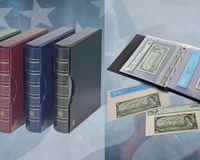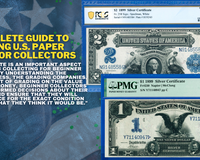Robert Mugabe, the president of Zimbabwe, was facing the problems around 2000 that he needed money to bribe his enemies and reward his allies. Unfortunately, he had taxed pretty much everything there was to tax and his policies had scared away investors. The economy was not doing well and his people were unemployed and hungry. So where did he get the money ?
Zimbabwe’s History
Zimbabwen located in the southern of Africa. It was discovered by some pioneers in 1890s, and settled by the British column. From 1911 to 1964, it was named as Southern Rhodesia, from 1964 to 1979 Rhodesia .And from 1979 to 1980 after gaining independence, it was officially renamed as Zimbabwe. Zimbabwe is about the size of California, 390,757 square. Zimbabwe’s capital is Harare.
 Zimbabwe located in South Afica
Zimbabwe located in South Afica
After gaining independence from the British column in 1980. The Zimbabwean dollar was introduced as a replacement to the old Rhodesian dollar at par, also to sign its independence significant to the world. The Zimbabwean dollar was a higher price than the United States at the official exchange rates. However, due to the inflation of Zimbabwe (during 2008-2009) and in the black markets, it was a lesser price. At present, the Zimbabwean dollar is one of the lowest dollar currency units in the world.
Zimbabwe gains independence and the economy during the 1980s and 1990s
In the early years after independence, Zimbabwe succeeded in its economics. It gained strong growth in agriculture and new development in its industry, especially the tobacco industry was growing up well. But, from 1991 to 1996, president Rober Mugabe had affected Zimbabwe’s economy negatively such as land reforms. It switched the owner of lands from white to the hands of black farmers. Unfortunately, these farmers weren’t trained or anything about farming. This led to a keen drop in food production from 1999 to 2009.
 Robert Mugabe in the first days Zimbabwe gains independence
Robert Mugabe in the first days Zimbabwe gains independence
Furthermore, with the collapse of banking, farmers couldn’t afford loans to develop. Within 3 years, many outputs in Zimbabwe were falling hastily such as food output dropped 45%, manufacturing output dropped 29% in 2005, and 26% in 2006, and commercial production dropped 76% in 2008. In contrast, the number of unemployed rose to 80%. Not only mounting public debts, but the government also facing the salaries of approximately 60,000 independent war veterans. In further, in 1988 the government spent on another finance in the Congo’s civil war, which prompted the government to begin monetization (convert something into money).
 Zimbabwe’ Hyperinflation rate
Zimbabwe’ Hyperinflation rate
Timeline of Zimbabwe Currency Systems and Inflation in Zimbabwe
In the 1980s, the series banknotes were issued Z$2, Z$5, Z$10, and Z$20. Before hyperinflation, the Zimbabwean dollar was the most used currency, more than 95% of transactions. It was more valuable than the dollar, such as $1 bought Z$0,647, but it’s not its real price.
 Full set of Zimbabwe banknotes
Full set of Zimbabwe banknotes
From 1994 to 2006, the Reserved Bank issued a new series of banknotes from Z$2 to Z$100. Due to the increase in inflation, from 2001 to 2005, Z$500 and Z$1,000 banknotes are issued. Ultimately, in the first half-year of 2006, the Z$50,000 and Z$100,000 denominations circulated. To prop up a weak economy and its spiral inflation, the government contributed its denomination into the billions and trillions not long after that.
 Zimbabwe 100 000 Dollars Banknotes issued in 2006
Zimbabwe 100 000 Dollars Banknotes issued in 2006
On July 6, 2007, Z$500,000 debuted which was officially equivalent to $16 at the exchange rate to the US dollar. At the end of 2007, in December another new denomination was introduced. Mainly, the height of hyperinflation in Zimbabwe, from 2008-2009, it was the period that its denomination was popping up to billions and trillions of dollars.
 Zimbabwe 500 000 Dollars issued in 2007
Zimbabwe 500 000 Dollars issued in 2007
In January 2008, the government introduced Z$1 million, Z$5 million, and Z$10 million. In April 2008, the Z$25 million and Z$50 million were introduced. At that time, US$1 was equal to Z$2,261,984,228 and the price of goods like T-shirts and pants cost millions of Zimbabwean dollars.
The economic crisis in the Zimbabwean country made the inflation rates increase to a humorous number 2,600.2% each month according to the research of Zimbabwean inflation. And this makes the denomination rise even higher, Z$100 million, Z$250 million, and Z$500 million were introduced as a new series on May 2, 2008, in Zimbabwe.
 Set of Zimbabwe Million Dollars Issued Mid-2008
Set of Zimbabwe Million Dollars Issued Mid-2008
Ridiculously, it doesn’t stop over there. At the height of the inflation rate, prices were increased at an astronomical rate of 7.6 Billion percent a month so that the Zimbabwe's goverment started issue new denominations called "The Zimbabwe Trillion Banknotes Z$10 trillion, Z$20 trillion, Z$50 trillion bills and the largest banknote ever—the Z$100 trillion note on Jan. 16, 2009". It has the same price as three eggs at the time. In April 2009, the government decided to stop printing its currency and switched to use foreign currencies. In 2015, the government planned to completely use the United States dollar as the official currency in its country.
Learn more about: Zimbabwe Currency or Zimbabwe 100 Trillion Dollars

Set of Zimbabwe Trillion Dollars Issued end of 2008

The historic Zimbabwe 100 trillion dollars - The highest denominations
Zimbabwe has suffered one of the worst inflation in the world. Zimbabwe had the second-highest incident of hyperinflation and the record of the inflation rate is 79,6 billion percent. Since economics started going down, the supply of goods was in shortages. Therefore, the basic goods were pushed up to higher prices. At that time, people had more money paper than basic goods, so they pushed the prices to those stuff at a higher price rapidly. Z$100 trillion was about the price of three eggs as an example. As a result, the denomination rose higher for demands. Combined with the acts of the government, printing more money to solve its problems such as several debts, its involvement in the Congo’s war, and the sloped economy. Inflation rose rapidly. This caused inflation to spiral and never stopped in the Zimbabwean country.
The consequences of hyperinflation are:
- Many people couldn’t afford basic goods.
- The bank was collapsed, so of course there will be no credit account available.
- Have to use foreign currencies.
- Unemployment percentage has increased rapidly. It used to be 10.8% in 1982. However, three decades later, it increased crazily to 80% over the country.
- Many people have no idea but emigrate to another countries. The emigration in Zimbabwe before the spiral inflation was about 6% over its population in 2005. However, the percentage increased to 9.9% in 2010, right after the hyperinflation.
The hyperinflation and crisis of economics in 2008 led to the wiped out of the abundant population, the thriving economics and the wealth of Zimbabwen’s citizens. This brought back the country more than half century. The economics will be recovery gradually, even though this is an unforgettable study for not only Zimbabwen country, it includes other country to be careful about the push of prices.










